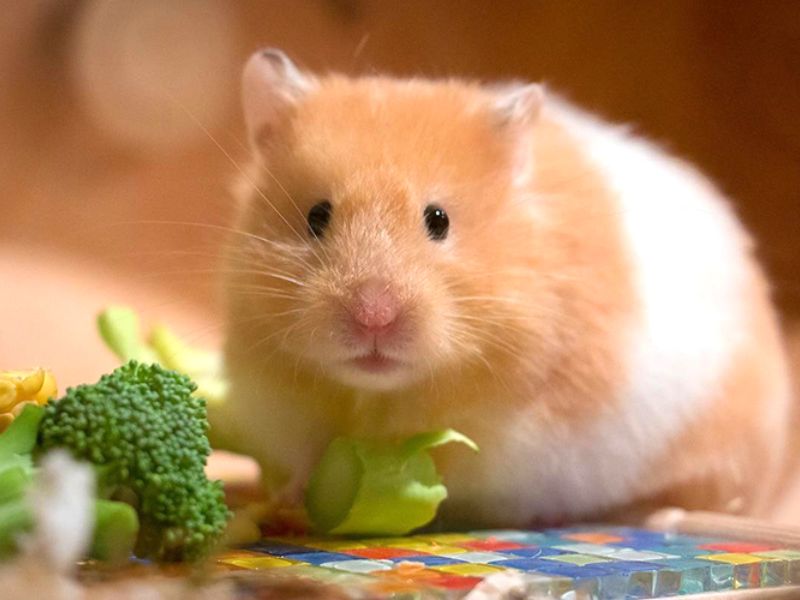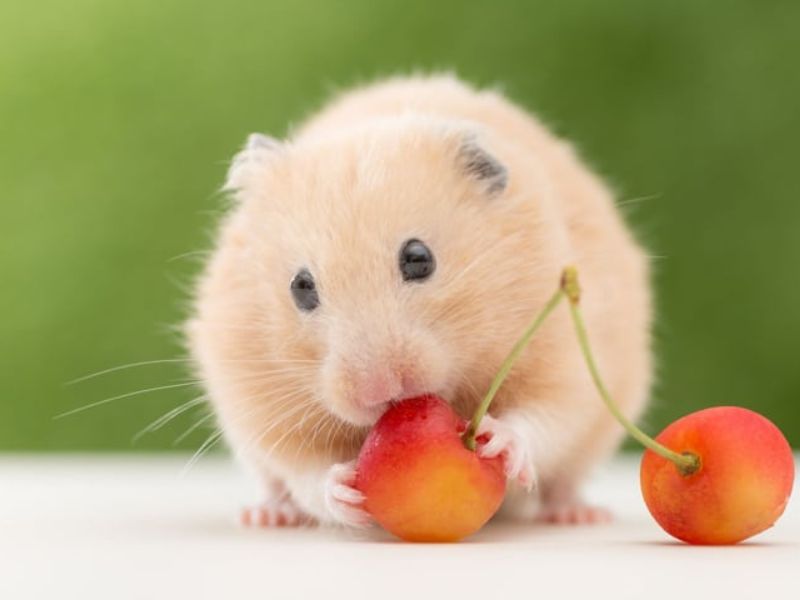Many new hamster owners find themselves asking, “How to get my hamster to like me?” Building a trusting, affectionate relationship with a tiny, nocturnal pet may seem daunting at first. Unlike dogs or cats, hamsters communicate through subtle body language and scent cues, so gaining their confidence requires patience, consistency, and the right approach. In this comprehensive guide, you’ll learn everything from preparing the perfect cage environment to advanced trust‑building techniques. By following these proven strategies, you’ll soon enjoy gentle nuzzles and endearing behaviors that show your hamster truly values your companionship.
1. Creating a Comfortable Environment
The foundation of any strong bond with your hamster is a habitat that feels safe and enriching. A stressed or bored hamster is unlikely to warm up to handling, so focus first on making their home inviting.
- Spacious Cage Design: Choose a cage that offers at least 450 square inches of floor space. Multiple levels connected by ramps give your hamster room to explore and exercise, reducing stress.
- Appropriate Bedding & Nesting Materials: Provide at least two inches of paper‑based or aspen shavings bedding for digging and burrowing. Include nesting materials like shredded paper or hay so your hamster can create a comfortable nest.
- Hideouts & Tunnels: Offer hideaways such as wooden huts, ceramic caves, and plastic tunnels. These shelters allow your hamster to retreat when they feel uncertain, building a sense of security.
- Variety of Toys & Enrichment: Rotate chew toys, wooden blocks, and puzzle feeders weekly to prevent boredom. A well‑stimulated hamster is more likely to approach you out of curiosity rather than fear.
By setting up a cozy, stimulating habitat right from day one, you lay the groundwork for answering the question, “How to get my hamster to like me?” — because a content hamster is a confident and trusting one.
2. Allowing Time for Adjustment
Once your hamster arrives home, resist the urge to handle them immediately. They need an adjustment period to acclimate to their new surroundings and scent. Rushing this phase can backfire, making your hamster skittish and fearful of your presence.
- Initial Quarantine: For at least five to seven days, let your hamster observe you from a distance. Speak softly near the cage to help them get used to your voice without feeling threatened.
- Quiet Observation: Spend 10–15 minutes daily sitting quietly beside the cage. Avoid direct eye contact, which can feel confrontational to prey animals like hamsters.
- Minimal Disturbance: Perform essential care tasks—feeding, cleaning water bottle—at predictable times. Consistency helps your hamster learn to trust that your presence signals routines rather than danger.
Giving your hamster time and space to settle reduces stress hormones, making the next steps in how to get my hamster to like me far more effective.

3. Building Trust Gradually
With your hamster now comfortable in its habitat, it’s time to start one of the most critical phases: trust building. Slow, methodical progress ensures your hamster views you as a friend, not a threat.
- Hand‑Feeding Through the Bars: Offer small, healthy treats like sunflower seeds or diced apple. Hold the treat gently between your fingers and allow your hamster to approach and take it. Repeat daily for 5–10 minutes.
- Scent Familiarization: Place a cloth with your scent inside the cage (wear it against your skin first). Over 2–3 days, your hamster will grow accustomed to your unique smell.
- Open‑Hand Offering: Once your hamster consistently takes treats through the bars, try offering treats in your open palm inside the cage. Keep your hand steady at floor level to appear nonthreatening.
- Gentle Cage Visits: Gradually move your hand deeper into the cage while continuing to offer treats. If your hamster retreats, pause and try again later. Patience here prevents setbacks.
Incorporating these techniques daily is the secret to mastering how to get my hamster to like me, as they teach your hamster that your presence leads to positive experiences.
4. Hand‑Feeding and Gentle Handling
After your hamster willingly approaches your hand, you can move on to one of the most rewarding steps: holding and gentle handling.
- Scooping Technique: Use a small cup or your cupped hands to scoop your hamster from below rather than grabbing from above—this mimics how a mother hamster picks up her young.
- Secure, Low‑Height Handling: Hold your hamster over a soft surface like a couch cushion or the floor. Keep handling sessions to 3–5 minutes initially, gradually extending as your hamster becomes more comfortable.
- Positive Reinforcement: Praise softly or offer a tiny treat immediately after handling. This reinforces the idea that being handled equals good things.
- Respect Your Hamster’s Cues: Watch for signs of stress: freezing, rapid breathing, or attempts to wriggle free. If you notice these, return your hamster to the cage and try again later.
Mastering gentle handling is a pivotal part of how to get my hamster to like me, transforming your pet into a trusting companion willing to climb onto your palm.
5. Establishing a Consistent Routine
Hamsters thrive on predictability. A stable daily schedule reinforces trust and reduces anxiety, making your hamster more receptive to interaction.
- Fixed Feeding Times: Deliver food at the same times each day. A hamster that knows when to expect meals will associate your presence with nourishment.
- Regular Play Sessions: Hamsters are crepuscular (most active at dawn and dusk). Schedule short play and handling sessions during these periods to align with their natural rhythms.
- Consistent Cleaning Schedule: Clean the cage on the same day each week. Before cleaning, let your hamster explore a safe, enclosed play area so they don’t associate cleaning with sudden absence or stress.
- Uniform Caregiver Cues: Encourage all family members to follow the same quiet cues—wearing a certain color shirt, speaking softly—to signal play or feeding time. This avoids confusing your hamster.
By embedding a routine into your hamster’s life, you answer how to get my hamster to like me in a practical, trust‑reinforcing way.

6. Recognizing and Respecting Boundaries
Even the most social hamsters have limits. Pushing them too quickly can strain the bond you’re building. Learn to read your hamster’s body language and give them the freedom to choose interaction.
- Stress Signals: Look for flattened ears, rapid nose twitching, or attempts to hide. These signs indicate your hamster needs a break.
- Allowed Retreats: Always leave exits—like open tubes or hideouts—available during handling. Being able to retreat gives your hamster control, reducing fear.
- Gradual Progression: If your hamster freezes or jumps away, pause the session and try a gentler approach later. Respecting these boundaries is crucial to sustainable bonding.
By attending to your hamster’s comfort, you foster trust, reinforcing your mastery of how to get my hamster to like me through empathy and patience.
7. Troubleshooting Common Challenges
Owners often encounter roadblocks on the bonding journey. Here’s how to address them:
- Biting or Aggression: Back up a step: return to hand‑feeding through the bars and slow your progress. Never punish; this increases fear.
- Shyness or Nervousness: Extend the adjustment period. Spend more time quietly near the cage, and increase scent familiarization with worn cloths.
- Excessive Activity or Escape Attempts: Provide more hideouts and enrichment to reduce boredom. A well‑occupied hamster is less inclined to dash away.
- Health‑Related Setbacks: Illness can make even a friendly hamster irritable. If behavior changes abruptly, consult a veterinarian to rule out medical issues.
Troubleshooting effectively ensures that questions of how to get my hamster to like me aren’t left unanswered by temporary setbacks.
8. Maintaining and Deepening the Bond
Once your hamster reliably trusts and enjoys your company, it’s important to maintain that relationship over the long term:
- Advanced Enrichment: Introduce new habitats like playpens or timed foraging boxes to keep interactions novel.
- Out‑of‑Cage Play: Supervised exploration of hamster‑proofed areas can strengthen your bond through shared adventures.
- Training Small Tricks: Teach simple behaviors like climbing onto your hand or following a treat‑trail. Positive training reinforces trust and mental engagement.
- Health Monitoring: Regularly check your hamster’s teeth, weight, and fur condition. A healthy hamster is more sociable and comfortable being handled.
Ongoing attention and creativity ensure that the answer to how to get my hamster to like me evolves into a lasting, heartwarming companionship.
Developing a loving relationship with your hamster takes time, patience, and consistency. By creating a cozy habitat, allowing a thoughtful adjustment period, building trust through hand‑feeding and gentle handling, and respecting your hamster’s boundaries, you’ll lay the groundwork for a bond based on mutual comfort and affection. Remember to maintain a steady routine, troubleshoot challenges with empathy, and keep interactions fresh with new enrichment. Before long, you’ll find your hamster eagerly approaching your hand, content in your presence—proof that your efforts to discover how to get my hamster to like me have truly paid off.
Embrace each small victory, celebrate your hamster’s unique personality, and enjoy the rewarding journey of forging a connection that will enrich both your lives for years to come.

